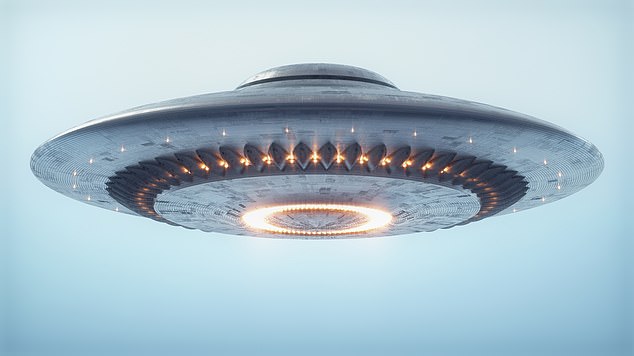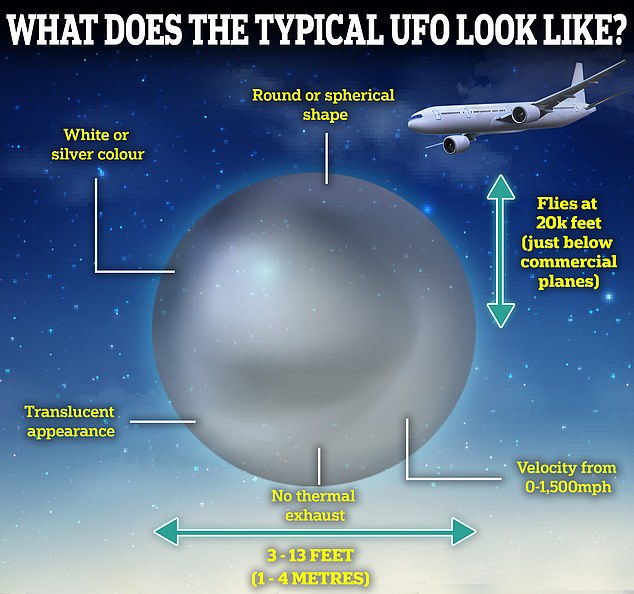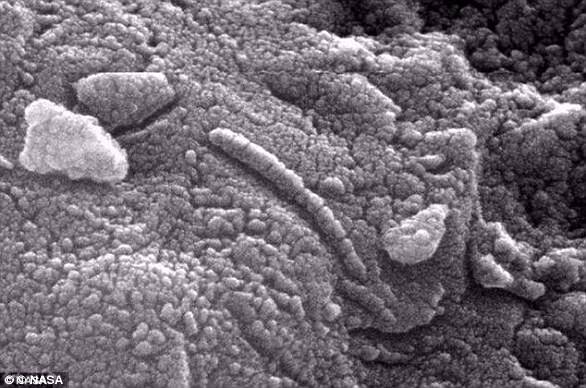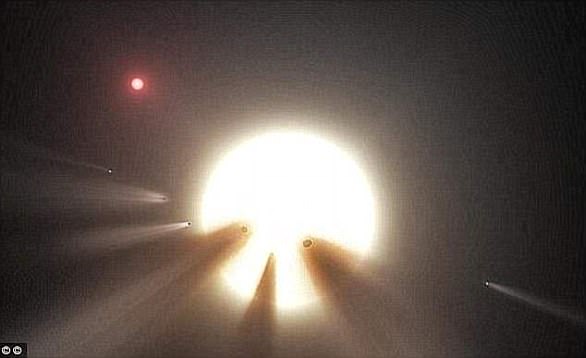We might NOT be alone! NASA says it can’t rule out that ‘alien technology’ is operating in the Earth’s atmosphere
NASA cannot rule out that “potentially unknown alien technology” is active in Earth’s atmosphere, a new report has concluded.
The research into flying saucers, UFOs and claims that alien spacecraft are visiting Earth has long been the domain of mavericks and misfits.
But yesterday NASA said it wanted to eliminate the “negative perception” surrounding unidentified flying objects and make them a scientifically respectable area of study.
As part of its effort to put the study of UFOs on a more scientific basis, it said it preferred to call them UAPs – “unidentified anomalous phenomena.”
A NASA panel, made up of 16 experts in scientific fields ranging from physics to astrobiology, compiled a report on UAPs that called it “one of our planet’s greatest mysteries.”
NASA cannot rule out that “potentially unknown alien technology” is active in Earth’s atmosphere, a new report has concluded. Pictured: NASA Administrator Bill Nelson speaking yesterday

Above, a weather balloon floats through the sky after being released from the Cape Canaveral weather station in Florida. NASA’s panel included this image in their report as an example of the striking, highly unusual objects that nevertheless have an Earth-like explanation
The report says: ‘Sightings of objects in our skies that cannot be identified as balloons, aircraft or natural phenomena have been recorded worldwide, but there are only limited high-quality observations.
“The nature of science is to explore the unknown, and data is the language scientists use to discover the secrets of our universe,” the report said.
“Despite numerous reports and images, the lack of consistent, detailed and composite observations means that we currently do not have the amount of data necessary to draw definitive, scientific conclusions about UAP,” it added.
The report states that there is ‘no reason’ to conclude that existing UAP reports have an extraterrestrial source.
But if it is plausible that alien life forms exist in the Milky Way, it is also plausible that there is “potentially unknown alien technology active in Earth’s atmosphere.”

The report states that there is ‘no reason’ to conclude that existing UAP reports have an extraterrestrial source. But if it is plausible that alien life forms exist in the Milky Way, it is also plausible that there is “potentially unknown alien technology active in Earth’s atmosphere.”

NASA has previously revealed the characteristics of the typical UFO, including its color and shape, speed and flight level
The report was not a review of past UFO incidents, but a “roadmap” of how UAPs can be scientifically studied and evaluated in the future.
It also only referred to unclassified reports, with the report’s authors acknowledging that the US military also has classified images and reports of UAPs that are not available to the public.
NASA said it would make a “concerted effort” to study UAPs scientifically, using its satellites, as well as commercial satellites, and use artificial intelligence to analyze data.
The public could also help by using smartphone apps to take photos of potential UFOs.
NASA said it has appointed a new director of UAP research — who was not named — who will be responsible for creating a “robust database for evaluating future UAP.”
The director will not be named because members of the panel received “harassment” and “threats” while working on the report, NASA officials said.
The report added that it was important to get to the bottom of UAPs because “the threat to the security of U.S. airspace posed by UAP is self-evident.”
At a press conference yesterday, one of the report’s authors, Dr. Dan Evans, was asked why the report had to rely on unclassified material – while the US Department of Defense clings to classified images and videos.
Dr. Dr Evans said: ‘One of the reasons we limited this study to unclassified data is so we can talk about it openly. Evans.
‘And with that we once again strive to change the discourse from sensationalism to science.’
The scientists were asked to comment on a recent claim by a UFO expert, Jaimie Maussan, that in 2017 he had discovered two ancient ‘non-human’ alien corpses in Cusco, Peru, which are 1,800 years old and which are claimed to be they have 30. cent DNA of an ‘unknown’ type.
Dr. David Spergel, chairman of the panel, said samples from the bodies should be made available to the broader scientific community.
NASA released a watershed report in 2021, compiled by the Office of the Director of National Intelligence in collaboration with a Navy-led task force, that included numerous observations – primarily of UAP military personnel.
The report included some UAP cases that previously came to light in the Pentagon’s release of video footage from Navy aviators showing mysterious aircraft off the US east and west coasts.
According to the report, defense and intelligence analysts did not have sufficient data to determine the nature of some objects.



